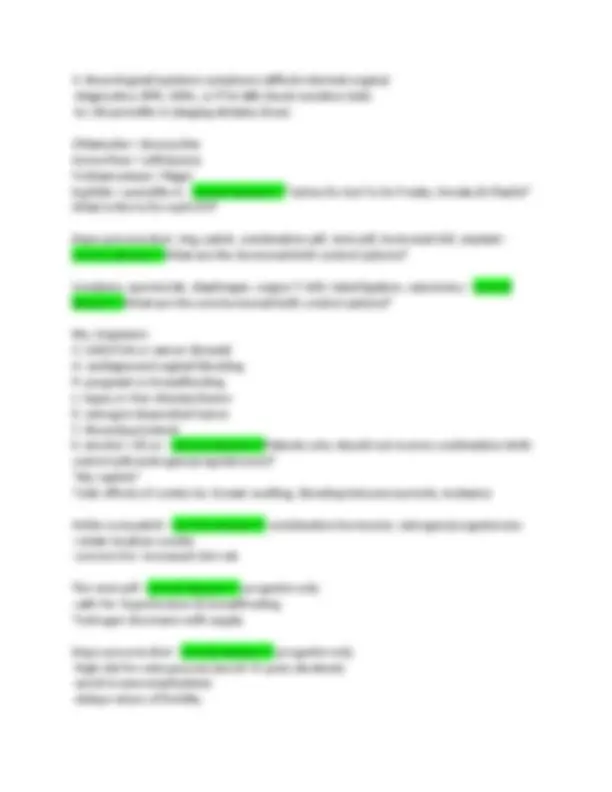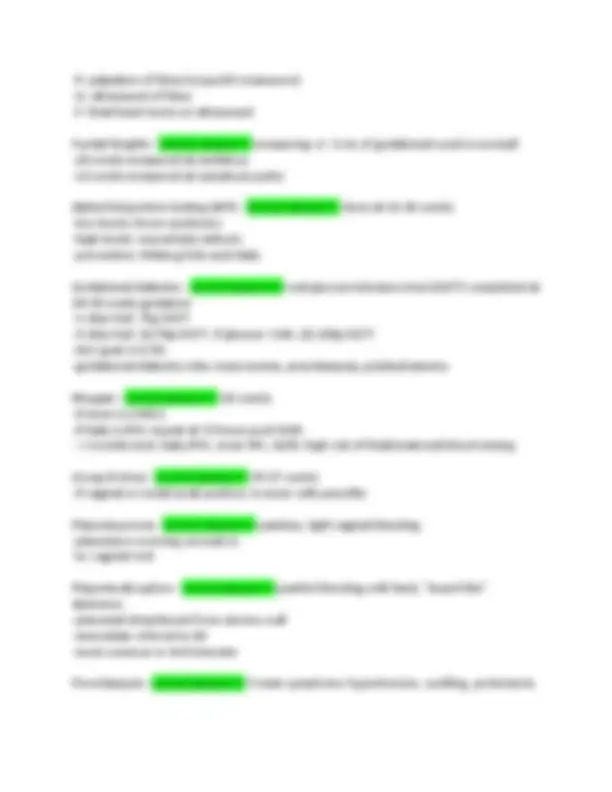






Study with the several resources on Docsity

Earn points by helping other students or get them with a premium plan


Prepare for your exams
Study with the several resources on Docsity

Earn points to download
Earn points by helping other students or get them with a premium plan
Community
Ask the community for help and clear up your study doubts
Discover the best universities in your country according to Docsity users
Free resources
Download our free guides on studying techniques, anxiety management strategies, and thesis advice from Docsity tutors
Pap smears - correct answer>>-specimens are satisfactory if collected from the "transformation zone" -will include both squamous epithelial and endocervical cells...otherwise considered "incomplete" -start screenings at 21, can stop at 65 -21-29 yo: Pap smear every 3 years (if NORMAL) -30+ yo: Pap smear every 5 years w/ HPV co-test (if NORMAL) Abnormal Pap smears - correct answer>>-"inflammation" (non-specific finding) cervicitis concern; screen for gonorrhea & chlamydia -"ASC-US": atypical squamous cells of undetermined significance —repeat pap in 12 mo & HPV testing —if HPV neg: repeat co-test (pap & HPV) in 3 yrs —if HPV pos (strains 16 &18): colposcopy (diagnostic test for cervical cancer -"LSIL": low-grade squamous intraepithelial lesions (HPV usual cause) —collect with cervical biopsy: colposcopy -"HSIL": high-grade squamous intraepithelial lesions (pre/cancerous concern!)
Typology: Exams
1 / 8

This page cannot be seen from the preview
Don't miss anything!





Pap smears - correct answer>>-specimens are satisfactory if collected from the "transformation zone"
Trichomoniasis - correct answer>>-signs/symptoms: "strawberry cervix" with flagella, green/yellow d/c, vulva red/inflamed, lower abd pain